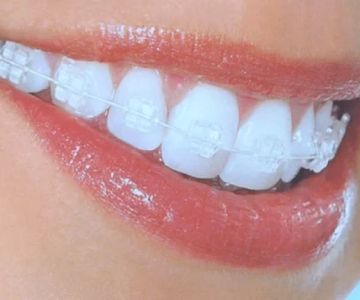Understanding Jaw Surgery for Bite Correction: A Detailed Guide
- What is Jaw Surgery for Bite Correction?
- Who Needs Jaw Surgery?
- The Procedure: Step by Step
- Real-Life Cases and Success Stories
- Benefits and Risks of Jaw Surgery
- Next Steps: Exploring Your Options
1. What is Jaw Surgery for Bite Correction?
Jaw surgery, also known as orthognathic surgery, is a procedure aimed at correcting irregularities of the jaw bones, realigning the jaws and teeth to improve both function and appearance. It’s particularly important for individuals suffering from a misaligned bite, which can lead to difficulties in chewing, speaking, and maintaining oral health.
2. Who Needs Jaw Surgery?
Not everyone with a dental issue requires jaw surgery. Typically, the procedure is recommended for individuals who fail to achieve proper bite correction through orthodontic treatment alone. Cases include severe overbites, underbites, and crossbites that impact daily functions. Consultation with an orthodontic specialist can provide a clearer understanding of the necessity of this procedure.
3. The Procedure: Step by Step
Jaw surgery involves several stages, starting with a thorough evaluation and planning phase. During the procedure, the surgeon separates and realigns the jawbones as needed. Post-surgery, patients may need to wear braces and undergo a recovery period that includes a specific diet and restrictions on physical activities. Each phase is critical to ensure the best outcome for correcting the bite.
4. Real-Life Cases and Success Stories
Many have transformed their lives with successful jaw surgeries. Take Sarah, for example, who once struggled with severe underbite issues. Post-procedure, she experienced significant improvements in both her speaking ability and self-esteem. Stories like hers are common and highlight the potential life-changing impact of undergoing jaw surgery.
5. Benefits and Risks of Jaw Surgery
Jaw surgery can bring considerable benefits, including enhanced facial appearance and improved oral functionality. However, like any major surgery, it carries risks such as infection or nerve damage. Discussing these aspects with your healthcare provider is crucial for an informed decision.
6. Next Steps: Exploring Your Options
If you believe jaw surgery might be a suitable option for you or someone you know, the next step is to seek further information and professional advice. To learn more about the procedure and find expert consultation, visit Dentistry Toothtruth. They provide comprehensive resources and professional insights to guide your journey towards improved oral health.




 Richards & Associates Orthodontics4.0 (228 review)
Richards & Associates Orthodontics4.0 (228 review) Gulf Coast Oral and Facial Surgery4.0 (267 review)
Gulf Coast Oral and Facial Surgery4.0 (267 review) Pediatric Dental Of Grafton5.0 (7 review)
Pediatric Dental Of Grafton5.0 (7 review) Milford Dentist Office4.0 (189 review)
Milford Dentist Office4.0 (189 review) Cary Family Dental Kildaire Properties II5.0 (2 review)
Cary Family Dental Kildaire Properties II5.0 (2 review) The Dentists, LLC5.0 (180 review)
The Dentists, LLC5.0 (180 review) The Importance of Oral Health Education During Pregnancy for a Healthy Pregnancy
The Importance of Oral Health Education During Pregnancy for a Healthy Pregnancy Best Tips for Brushing Your Teeth Properly for Healthy Gums: Essential Techniques for Oral Health
Best Tips for Brushing Your Teeth Properly for Healthy Gums: Essential Techniques for Oral Health Why Skipping Dental Checkups Can Lead to Bigger Oral Health Problems
Why Skipping Dental Checkups Can Lead to Bigger Oral Health Problems Advantages of Porcelain Dental Restorations
Advantages of Porcelain Dental Restorations How Can Diabetes Cause Tooth and Gum Problems? Preventing and Managing Oral Health Issues
How Can Diabetes Cause Tooth and Gum Problems? Preventing and Managing Oral Health Issues Healthy Habits for Promoting Good Oral Health and Hygiene: Tips for a Healthy Smile
Healthy Habits for Promoting Good Oral Health and Hygiene: Tips for a Healthy Smile